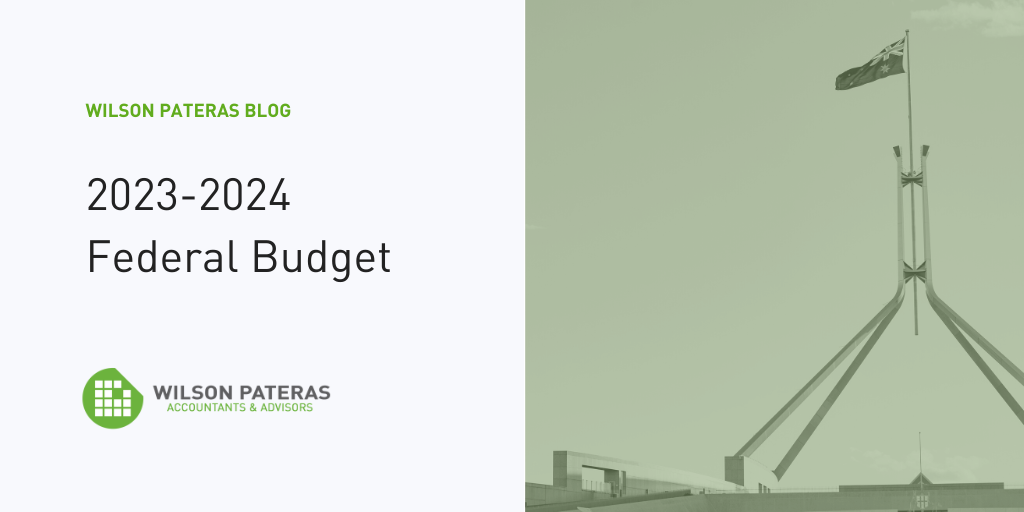
The first Federal Budget of the Albanese government has been delivered by Treasurer Jim Chalmers. Below is a summary of the key announcements for businesses and medical practitioners.
Temporary full expensing for businesses
The temporary full expensing business initiative that was due to end on 30 June this year has been extended for another year, but with reduced asset and business turnover thresholds, and a new name.
After July 1, only assets costing $20,000 or less can be fully written off as tax deductions in the 2023/24 financial year by businesses with an annual turnover less than $10 million. Multiple assets under $20,000 can be written off. However, assets costing more than $20,000 and purchased from July 1 onwards must be depreciated over several years.
The new program will be known as the Small Business Support – $20,000 Instant Asset Write-Off program.
The temporary full expensing program that it replaces currently allows businesses with an annual turnover under $5 billion to claim an immediate tax deduction for the full purchase price of business assets like equipment and machinery, as well as business vehicles up to the value of $64,741.
This means that most Australian businesses only have a matter of weeks to take full advantage of the higher tax deductions available with the more generous asset value thresholds that exist until June 30 this year.
The temporary full expensing initiative was introduced by the Morrison coalition government to help businesses cope with the economic downturn caused by Federal and State/Territory government responses to the COVID-19 pandemic.
Renewable energy incentives for businesses
The ‘Small Business Energy Incentive’ will enable companies that have an annual turnover less than $50 million to claim an additional 20% depreciation deduction on the cost of energy assets up to the value of $100,000 that support “the electrification and the more efficient use of energy”, such as installing batteries or buying energy-efficient fridges.
Energy bill relief for eligible small businesses
Eligible small businesses across Australia will receive up to $650 from July 1 to help with the increasing costs of energy. You don’t have to apply for this payment. It will be taken off your next energy bill after July 1 if your business is eligible.
Crackdown on business GST avoidance
The government will spend $600 million over the next four years on GST compliance activities to ensure that all eligible businesses are paying GST. It is compulsory for businesses with an annual turnover of $75,000 or more to charge 10% GST on all sales. It must be remitted to the Australian Taxation Office each quarter less any input credits.
Multinational tax changes
Large multinationals with global revenue of at least $2 billion will now be subject to minimum tax rates of 15% on their global and domestic operations. This measure will bring Australia into line with other OECD countries in helping to ensure that all multinationals pay at least a minimum level of tax in each location where they operate.
Future changes to compulsory super guarantee payment timing
This year’s Federal Budget announced that from 1 July 2026, employers will have to make their compulsory super guarantee payments for employees on the same day that they pay salary and wages to their employees (e.g. weekly, fortnightly or monthly).
Currently, employers make these payments quarterly. This arrangement will still be allowed until 1 July 2026.
Super guarantee payment percentages are progressively scheduled to increase from the current rate of 10.5% of an employee’s ordinary time earnings up to 12% by 1 July 2025. The timeline for the increases is outlined in the table below.
| Time Period | Superannuation Guarantee Percentage |
| 1 July 2022 to 30 June 2023 | 10.5 |
| 1 July 2023 to 30 June 2024 | 11 |
| 1 July 2024 to 30 June 2025 | 11.5 |
| 1 July 2025 onwards | 12 |
Changes to taxation on super balances over $3 million
From 1 July 2025, individuals with total superannuation balances in excess of $3 million will have earnings on the excess amount (and any additional contributions) taxed at 30%, rather than the standard concessional tax rate for superannuation (15%).
Earnings on the first $3 million will continue to be taxed at the concessional rate (or be tax-free if the funds are held in a superannuation pension account).
Minimum super pension drawdowns increasing
The current 50% reduction on minimum super pension drawdowns percentages will end on July 1 this year. This reduction was put in place to counter volatile investment markets during the COVID-19 pandemic period. The minimum super pension drawdown percentages will now revert to pre-pandemic levels and are outlined in the table below. The percentages are age-based.
| Current Age | Minimum Super Pension Drawdown Percentage |
| Under 65 | 4 |
| 65 to 74 | 5 |
| 75 to 79 | 6 |
| 80 to 84 | 7 |
| 85 to 89 | 9 |
| 90 to 94 | 11 |
| 95 or more | 14 |
If you have a super pension, you must withdraw at least these percentages each year.
If you have a self-managed super fund (SMSF) and you don’t ensure this minimum drawdown percentage each year, then your fund will be in breach of Australia’s superannuation regulations and you will be legally liable as the fund’s trustee.
Bulk billing
The Federal government will triple the bulk-billing incentive that GPs currently receive. This increase means that GPs will be able to bulk bill more types of consultations if they wish to do so.
The incentive is aimed at providing affordable healthcare for pensioners, other Commonwealth concession card holders and children aged under 16. The Federal government estimates that the incentive will enable more than 11 million Australians in these two groups to access healthcare funded by Medicare (i.e. with no out-of- pocket costs).
How we can help
We are a full-service accounting firm providing a range of services to businesses and individuals:
- business accounting
- tax planning
- bookkeeping
- financial planning
- retirement planning
- self-managed super fund (SMSF) advice
- private wealth creation
- lending and finance.
Contact us today to find out more.




